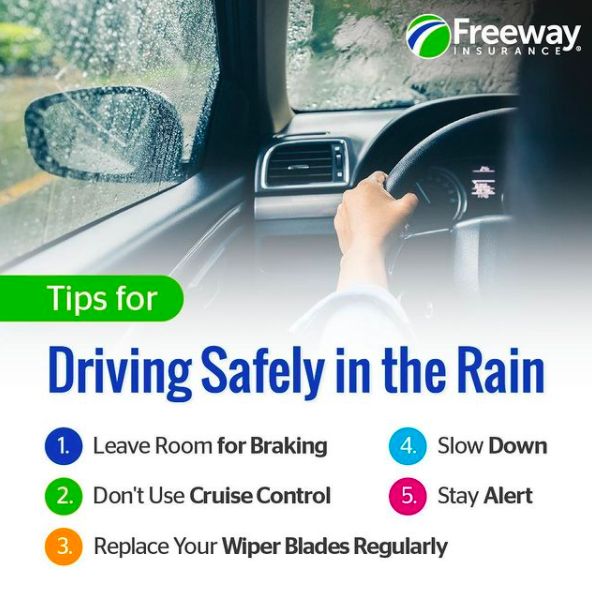Driving In A Wintry Mix: Rain And Snow Safety Tips

Table of Contents
Vehicle Preparation for Driving in a Wintry Mix
Before even thinking about hitting the road in a wintry mix, thorough vehicle preparation is paramount. Neglecting this step can dramatically increase your risk.
Tire Check and Maintenance
Proper tire inflation and sufficient tread depth are critical for maintaining control in rain and snow. Winter tires offer superior grip in cold temperatures and snowy conditions, but even all-season tires need to meet certain criteria.
- Check Tire Pressure: Use a reliable gauge to check your tire pressure against the recommendations listed in your vehicle's owner's manual. Remember that tire pressure decreases in cold weather.
- Inspect Tread Depth: The minimum legal tread depth varies by location, but generally, it's recommended to have at least 4/32 of an inch. Use a penny to check: If you can see the top of Lincoln's head, your tread is too shallow.
- Tire Rotation and Balancing: Regular rotation and balancing ensure even wear and optimal performance, crucial for handling slippery surfaces.
Detail: Winter tires are specifically designed with deeper treads and a softer rubber compound for better grip on snow and ice. All-season tires offer a compromise between summer and winter performance, but they may not provide the same level of traction in severe winter conditions. Studded tires, while offering superior grip on ice, are often restricted or prohibited in certain areas.
Fluid Levels and System Checks
Adequate fluid levels are essential for safe operation in cold weather. Using the wrong fluids can lead to serious problems.
- Antifreeze: Ensure your antifreeze (coolant) provides adequate protection against freezing temperatures. Check your owner's manual for the recommended protection level.
- Washer Fluid: Use winter-grade washer fluid, designed to withstand freezing temperatures and prevent your washer system from freezing.
- Engine Oil: Check your engine oil level and use the correct weight oil recommended for your vehicle and the prevailing temperatures.
- Brake Fluid: Check your brake fluid level; low fluid indicates a potential problem requiring professional attention.
Detail: Driving with low fluid levels can lead to engine damage, brake failure, and reduced visibility, all of which can result in dangerous situations.
Emergency Kit Essentials
A well-stocked emergency kit is crucial for dealing with unexpected situations while driving in a wintry mix.
- Blanket: Provides warmth in case of a breakdown or accident.
- Flashlight: Essential for visibility in low-light conditions or at night.
- Jumper Cables: For jump-starting a dead battery.
- First-Aid Kit: To address minor injuries.
- Snacks and Water: Provide energy and hydration if you become stranded.
- Ice Scraper: To clear snow and ice from your windows and lights.
- Road Flares or Reflective Triangles: To warn other drivers in case of a breakdown.
Detail: Store your emergency kit in an easily accessible location, such as the back seat or trunk. Consider adding items like gloves, hats, and extra warm clothing, especially for colder climates.
Driving Techniques for Rain and Snow
Mastering safe driving techniques is critical for navigating the challenges of rain and snow.
Safe Driving Speeds and Distances
Reduced speed and increased following distance are vital for safe driving in adverse weather conditions.
- Reduce Speed: Significantly lower your speed based on visibility and road conditions. Never drive faster than you can safely stop.
- Increase Following Distance: Maintain at least a 3-second following distance (or more in slick conditions). This gives you extra time to react to unexpected hazards.
Detail: Reduced visibility and decreased traction significantly increase your stopping distance. Allow extra time and distance to brake safely.
Handling Slippery Surfaces
Knowing how to react to slippery surfaces is crucial for avoiding accidents.
- Brake Smoothly: Avoid hard braking, which can cause skidding. Apply the brakes gently and gradually.
- Accelerate Gently: Accelerate smoothly to avoid wheel spin.
- Steer Smoothly: Make smooth, controlled steering adjustments. Avoid sudden or jerky movements.
- React to Skidding: If your vehicle begins to skid, steer in the direction of the skid and avoid braking hard.
Detail: Anti-lock brakes (ABS) and traction control systems can help you maintain control in slippery conditions, but they are not a substitute for careful driving.
Visibility and Headlight Usage
Maintaining good visibility is essential, especially during a wintry mix.
- Use Headlights: Use your headlights, even during the day, to increase your visibility to other drivers.
- Use Low Beams in Fog or Snow: High beams can reflect off the snow or fog, reducing visibility.
Detail: Ensure your windows and lights are completely clear of snow and ice before driving. Consider using fog lights if available for added visibility in dense fog or snow.
Awareness and Planning for Driving in a Wintry Mix
Proactive planning and awareness can significantly improve your safety.
Checking Weather Forecasts
Stay informed about weather conditions before and during your trip.
- Check Forecasts Regularly: Use reliable sources like the National Weather Service or your local news for up-to-date forecasts.
- Monitor Road Conditions: Check for road closures or travel advisories before you leave.
Detail: Postponing your trip if conditions are severely hazardous is always the safest option.
Knowing Your Route and Alternatives
Planning your route and identifying alternative routes is crucial.
- Plan Your Route in Advance: Use a navigation app or map to plan your route before you leave.
- Identify Alternative Routes: Have backup routes in case of road closures or accidents.
Detail: Inform someone of your travel plans, including your route and expected arrival time.
Conclusion
Driving in a wintry mix demands careful preparation, skilled driving techniques, and heightened awareness. By following these tips for vehicle preparation, safe driving practices, and proactive planning, you can significantly improve your chances of a safe journey. Remember that your safety and the safety of others are paramount. Stay safe this winter season by following these tips for driving in a wintry mix. Share this article with your friends and family to help them prepare for safe travels!

Featured Posts
-
 Understanding The Sound Perimeter Musics Impact On Human Connection
May 21, 2025
Understanding The Sound Perimeter Musics Impact On Human Connection
May 21, 2025 -
 Australian Running Record Shattered Fastest Crossing On Foot
May 21, 2025
Australian Running Record Shattered Fastest Crossing On Foot
May 21, 2025 -
 Dont Miss 10 Minnesota Twins Games On Kcrg Tv 9
May 21, 2025
Dont Miss 10 Minnesota Twins Games On Kcrg Tv 9
May 21, 2025 -
 Spectacles Engages Au Festival Du Collectif Le Bouillon Clisson
May 21, 2025
Spectacles Engages Au Festival Du Collectif Le Bouillon Clisson
May 21, 2025 -
 Huuhkajien Avauskokoonpanossa Kolme Muutosta Kaellman Ja Muut
May 21, 2025
Huuhkajien Avauskokoonpanossa Kolme Muutosta Kaellman Ja Muut
May 21, 2025
Latest Posts
-
 Musique Live Le Hellfest S Installe Au Noumatrouff
May 22, 2025
Musique Live Le Hellfest S Installe Au Noumatrouff
May 22, 2025 -
 Unprecedented Participation 19 Indian Paddlers At Wtt Chennai
May 22, 2025
Unprecedented Participation 19 Indian Paddlers At Wtt Chennai
May 22, 2025 -
 Experience Hellfest Concerts Au Noumatrouff Mulhouse
May 22, 2025
Experience Hellfest Concerts Au Noumatrouff Mulhouse
May 22, 2025 -
 Wtt Star Contender 19 Indian Paddlers Compete In Chennai
May 22, 2025
Wtt Star Contender 19 Indian Paddlers Compete In Chennai
May 22, 2025 -
 Au C Ur Du Hellfest Le Noumatrouff De Mulhouse
May 22, 2025
Au C Ur Du Hellfest Le Noumatrouff De Mulhouse
May 22, 2025
